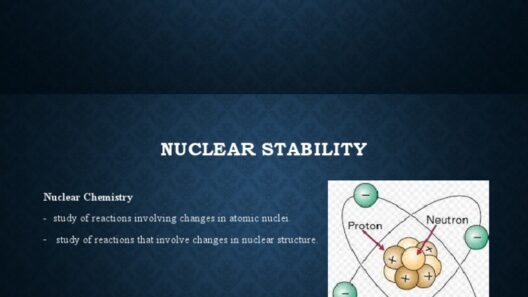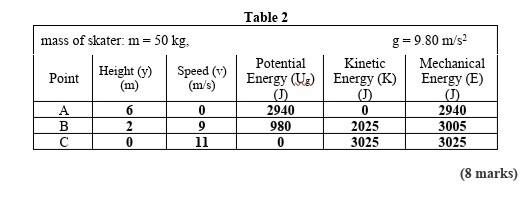Energy conservation is a fundamental principle in physics that maintains that within a closed system, the total energy remains constant over time. Understanding this principle is vital, as it allows us to effectively analyze various physical systems, from mechanical devices to complex ecological environments. When probing whether energy has been conserved within a given system, several key indicators should be considered, offering a framework that not only enhances comprehension but also shifts our perspective on energy dynamics.
At the core of proving energy conservation lies the identification of system boundaries. Clearly defining what constitutes the system and what lies outside it is imperative. This distinction fosters a more profound understanding of the interactions at play. For instance, in a mechanical system, the energy transformations that occur within the system might be obscured by external forces acting upon it, such as friction or air resistance. Thus, careful delineation is the first step in observing the flow and transformation of energy.
The conservation of mechanical energy can generally be divided into two forms: kinetic and potential energy. Kinetic energy is the energy possessed by an object due to its motion, calculated by the formula ( frac{1}{2}mv^2 ), where ( m ) stands for mass and ( v ) for velocity. Conversely, potential energy, often associated with an object’s position within a gravitational field, can be expressed as ( mgh ), where ( h ) represents height. In a closed system where only conservative forces are acting, the sum of kinetic and potential energy remains constant. By carefully measuring these two forms of energy at various checkpoints, one can establish if the total energy is conserved.
Another pivotal indicator of energy conservation involves the work-energy principle. This principle postulates that the work done on a system is equivalent to the change in its kinetic energy. Thus, if work is introduced or energy is expended within the system, a corresponding increase in kinetic energy should be observable. To investigate this, a detailed assessment of the forces acting on the system is essential. By measuring the work done by external forces and correlating it with the observed changes in energy, one can discern whether energy transformations adhere to the conservation law.
Moreover, the concept of non-conservative forces must not be overlooked. In many real-world scenarios, systems are subjected to non-conservative forces like friction, air resistance, or viscous drag. Investments of energy into these forces often result in a conversion of mechanical energy into thermal energy, which dissipates into the surrounding environment. This loss demonstrates that while mechanical energy may not be conserved, the overall energy of the universe remains unaltered. By quantifying the energy lost to these non-conservative forces, one can determine how much energy remains within the system for mechanical work.
Thermal energy, frequently the byproduct of other forms of energy transformations, lies at the heart of many energy conservation analyses. Temperature changes, heat transfer, and the conservation of thermal energy can all serve as key indicators. For instance, in a closed system undergoing a process where heat is exchanged, such as in an insulated container, measuring the temperature changes can provide insight into heat losses or gains. Heat transfer methods, including conduction, convection, and radiation, must also be considered, as they can impact the conservation narrative. Comprehending these modalities allows a clearer picture of energy distribution over time.
Furthermore, the use of modern technologies such as sensors and data logging can significantly enhance the accuracy of energy conservation assessments. With the advent of high-precision instruments, energy measurements—be it electrical, mechanical, or thermal—can be captured in real-time. Such data reveals trends that may not be immediately perceptible, thus promising a shift in our understanding of energy dynamics. Analyzing these trends over time can reveal correlations between energy inputs and outputs, thereby validating the conservation principle across various scenarios.
Systematic breakdowns and energy flow diagrams can also aid in visualizing and understanding energy conservation within a system. By laying out the energy transitions—be it from potential to kinetic energy, or mechanical to thermal energy—these diagrams elucidate the pathways taken as energy flows through a system. They simplify complex interactions into easily interpretable formats, thereby enhancing comprehension and enabling stakeholders to engage with energy conservation practices meaningfully.
Finally, reflective assessments of energy conservation not only contribute to theoretical understanding but also impact practical applications. In context, when assessing energy systems, such as renewable energy installations, evaluating net energy returns illustrates how concepts of conservation translate into efficient designs. Emphasizing efficiencies in energy usage can compel the adoption of more sustainable practices in various sectors, listen to the environment, and adapt our approaches accordingly.
In conclusion, proving whether energy has been conserved in a system necessitates a multi-faceted approach that encompasses the identification of system boundaries, analysis of energy forms, consideration of work-energy relationships, and examination of non-conservative forces. Utilizing modern technologies and systematic diagrams can further enhance our understanding. By engaging with these methods and fostering a curiosity about energy dynamics, we position ourselves to not only decipher the intricacies of conservation but also to shape a more sustainable future.







